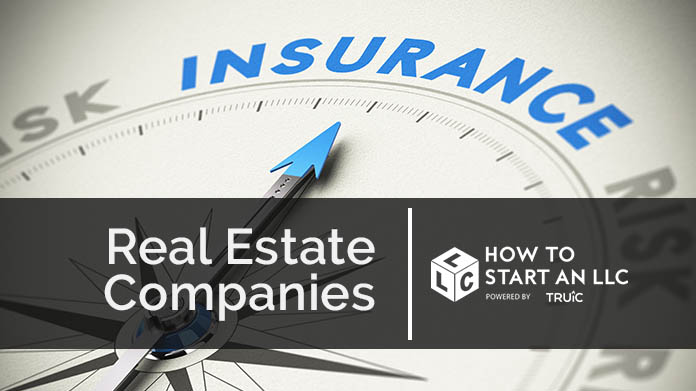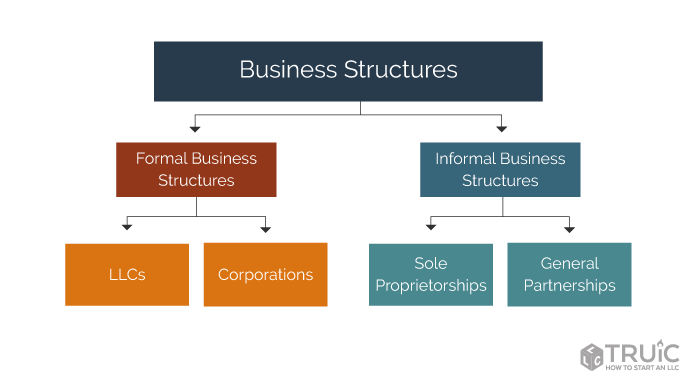How to Start a Rental Property Business
Starting a rental property business is a great way to invest in real estate and bring in a substantial monthly income.
Use this guide to learn how to start a rental property business in ten easy steps.
Recommended: Use ZenBusiness ($49 + State Fees) to form your real estate LLC for you.

Getting Started
A buy and rent real estate business acquires property at a discounted price with the intention to rehabilitate and rent the property. The goal of starting a buy and rent real estate business is to generate a monthly passive income that requires little effort to maintain successfully.
This is a service-based business that can provide you with additional monthly income or become your sole income source.
Here are some tips to keep in mind before you start planning your business:
- Do Your Own Due Diligence. Research is key to being successful in this business, whether you are evaluating potential markets or property types — the more you know, the greater the odds your business will be successful and lucrative.
- Don’t Forget Homeowners Insurance and Landlord Insurance. This is a good idea to help mitigate liability and offer you some protection as a homeowner when renting out your property.
- Avoid a Fixer-Upper. One of your goals when starting this type of business should be to get your property livable and rented as soon as possible. Therefore, it is important you aren’t spending too much time or money rehabilitating the property.
- Work With the Right Lender. Be sure you’re collaborating with a mortgage lender who can help you achieve your goals. Read our Best Mortgage Lenders for LLC Owners review to help you find the right fit.
Step 1: Get in the Right Mindset
The first step to starting a buy and rent real estate business is to get in the right mindset to own and operate this type of business successfully. Here are a few tips to get your mindset on the right track:
Go in with the mindset to help people — Buying and renting properties provides a service to your community by updating distressed properties to improve the neighborhood while simultaneously providing housing accommodations for renters in your area.
Get ready to work — With hard work, this type of business can provide long-term income. This isn’t a business where you will see a high return on investment right away — real estate renting requires dedication to be successful.
Educate yourself — In this business, learning from others that have experience buying and renting properties is key. Utilize the resources available to you and self educate to build a strong foundation of knowledge before starting this business.
Fine-tune your networking skills — This business model is team and system-based. As the business owner, you will need to develop a strong team of contractors, managers, and more to make this business a success.
Step 2: Start Planning Your Business
Setting up your buy and rent real estate business can be done in a few simple steps — building the foundation for your business to operate smoothly.
Choose a Business Structure
The first step to setting up any business is choosing a business structure. The most common business structures are sole proprietorship, partnership, limited liability company (LLC), and corporation. Your business structure informs how your business is taxed, set up, and operated.
Each of these structures suits different business needs, such as whether or not the business needs liability protection or to attract investors and whether the business needs to maintain a complex structure such as a corporation.
Generally, we recommend forming an LLC for most businesses. This business structure is easy to start and maintain, making it suitable for new and experienced business owners alike.
Protect Your Corporate Veil
Starting an LLC is a great first step to protecting your business’s corporate veil; however, it isn’t enough for long-term maintenance. To adequately protect your corporate veil prioritize the following:
- Sourcing the adequate startup capital
- Setting up a bank account and credit card separate from the owner’s finances
- Signing documents using proper titles (i.e., John Smith, as Authorized Member of ABC LLC, for and on behalf of ABC LLC)
- Documenting meeting minutes, if required in your LLC’s operating agreement
- Filing an annual report, if required by your state
Create a Website
Even if you are just getting started, creating a website for your real estate buy and rent business provides credibility and allows clients to easily access necessary information about your business.
Domain Name Search
We strongly recommend that you also check to see if your business name is available as a web domain (URL). Even if you don’t plan to create a business website today, you may want to buy the web address to prevent others from acquiring that domain name. It’s a free search.
Get a Logo
Every business should have a logo that is eye-catching and aligned with the business’s branding. Using our free logo maker, you can create a one-of-a-kind logo that suits your business’s needs.
Recommended: For everything you need to know about planning your new business, read a step-by-step breakdown in our Business Planning Guide.
Step 3: Assemble Your Teams
Operating this type of business isn’t a one-person project — in a buy and rent real estate business, you will need to compose four teams. These groups will assist you during each step of the process, from acquiring the property to managing it.
Here are the teams you will need to compile:
Team 1: Your first team will assist you in evaluating and acquiring the property you plan to rent. This could be composed of a real estate attorney or realtor.
Team 2: The second team will help with funding. This could be multiple mortgage officers so you can compare rates and loan packages, private money lenders, or a combination of the two.
Team 3: The third is a team consisting of experienced general managers or contractors that will help you estimate rehab costs and perform repairs once your offer has been accepted. The goal of this team is to make the property livable and add value to the property.
Team 4: Finally, once you’re ready to rent the property, you will need to either hire a property manager or — if you have the experience and time — you can fill this role yourself.
Step 4: Choose a Rental Property Type
Once you’ve established the teams to support your buy and rent business, you can choose your preferred rental property type. It is a good idea for beginners to choose one property type to start and master prior to acquiring other types of properties.
The types of properties to consider investing in:
- Single-family residential homes are a stand-alone home intended for one family’s occupancy.
- Multi-family residential homes are a single building intended to house more than one family. This could be anything from a duplex to a small apartment building.
- Vacation rentals can be rented on a nightly, weekly, or monthly basis for travelers or business professionals.
- Commercial properties are buildings used or leased for business activities.
Step 5: Choose Your Market
Your rental location informs the price and rentability; therefore, it is important to understand your market before you buy. A few factors to consider when evaluating a properties location are:
- Proximity to major cities, universities, and colleges
- The density of the workforce in the area
- Proximity to public transition and walkability
- Cost of living in the area
- Local crime rates
- Upkeep of the neighborhood and property itself
Tip: Resources that you can reach out to for more information on your market are local businesses, real estate meetups, and real estate companies/property management companies.
Step 6: Prepare Your Funding Source
Once you’ve settled on an ideal rental property and gotten to know your market, it’s time to prepare your funding source. Whether you are funding the project yourself, using a private loan or a conventional loan. This is the stage where you will prepare to acquire the property.
If you are using a conventional loan, speak with your local mortgage broker at this point to verify the down payment amount and obtain your pre-approval letter.
Need a refresher or more information on what goes into a mortgage? Be sure to read our guide to Mortgage Basics for LLC Owners.
Step 7: Make the Offer
Making an offer to the homeowner involves several steps, including making contact, doing a walkthrough, and preparing a contract with a real estate attorney.
Contacting the Seller
Once you have evaluated the property, you can contact the seller and set an appointment. The goal of this call is to set up an appointment to meet them and walk through the property. However, if you will be working with a realtor, they will contact the seller to set up this process for you.
Viewing the Property
During your walkthrough of the property, you are looking to gather as much information about the property as possible to inform your offer and budgeting. This mainly pertains to deferred maintenance and any major issues, such as replacing air conditioning or plumbing. Remember, you should avoid a fixer-upper when starting a buy and rent real estate business.
After you have virtually or physically walked through, write up your offer, or have the contract ready — as seen in step five. Have all of your conditions and contingencies in the contract and make the offer the same day as you walk through the property. Again, if you are working with a realtor, this process will be done with their guidance.
Deciding an Offer Amount
In a buy and rent real estate business, offers should be based on your ideal monthly return on investment and — if you anticipate making this your sole income — your monthly expenses that will need to be covered by this investment.
Additionally, after viewing the property and assessing the amount of rehabilitation, you will need to budget in order to contemplate the appropriate offer amount.
Step 8: Offer Accepted
Once your offer is accepted, there are four steps to securing the property and beginning the rehabilitation process: complete contingencies, select a title company, prepare your funding source, and close the deal.
- Complete any contingencies and conditions. The easiest way to stay organized during this stage is to create a spreadsheet for all time-sensitive due dates, such as property inspection and earnest money deposit.
Each time-sensitive contingency must be met unless an extension is allowed. Once each contingency is completed, it should be removed with the agreement for removal documented in writing. - Select a title company that is local to the subject property. The purpose of the title company is to verify the title is clear of all equitable interest, provide title insurance, manage escrow funds, and perform the closing/sale of the property. Introduce the seller to the title company in case additional information is required.
- Prepare your funding source by providing them with any required documentation. It is important to communicate with your funding source about details and updates about the sale.
- After you remove all contingencies, you can close the deal at the agreed closing date.
What is a “free and clear” title?
A title that is verified as “free and clear” by your title company is clear of any equitable interest meaning one sole, undisputed owner owns it; therefore, no other party can claim ownership of the property.
What is a “cloudy” title?
In real estate, a cloudy title is defined as an irregularity in the title that would cause a reasonable person to pause prior to accepting the transfer of the title.
What is a “marketable” title?
A marketable title is a property title that is considered so clear that any reasonable person would accept the conveyance of the title.
Step 9: Immediately Begin Rehabilitating the Property
During the offer acceptance phase, bring in a contractor to assess your rehabilitation checklist and perform an inspection walkthrough. Once you close the deal, you can instruct the contractor to begin the rehabilitation.
The agreement with your contractor should be in writing and reviewed by your attorney. This agreement should have the details of how funds will be dispensed as well as the ideal timelines.
What is a waiver of liens?
A waiver of liens is a document that states the contractor will have no right to place any liens, otherwise known as a right to claim property or assets in order to satisfy a debt. Once the contractor is done and the final payment for their services is complete, they must sign this document.
Step 10: Rent Your Property
Now that your property has been rehabilitated, it’s time to find your tenant! If you plan to use an experienced property manager or property management company, they will help with finding the renter and maintaining contact with the tenant. However, if you will be doing this independently, there are a few things to keep in mind:
- Determine the utilities the renter will be paying and how this affects your ideal monthly income
- Market your property using trusted websites such as Zillow or Apartments.com
- Most importantly, talk to an attorney about your legal rights and obligations before beginning the rental process
Make sure you’re working with a mortgage lender who understands your goals and can help you find the best loan to help your business succeed. Read our Best Mortgage Lenders for LLC Owners review to learn more.
Frequently Asked Questions
We recommend starting an LLC for a buy and rent real estate business. This business structure is easy to maintain and form, making it ideal for new business owners.
You can buy an investment property with little to no money in a few ways via a private lender, traditional mortgage, or by combining the funding you have with friends and family.
To determine whether a rental property will be a good investment, talk to experienced real estate investors and people in the community you are looking to buy in.
Next, evaluate the property and determine the amount of repair the property will need to undergo to be livable and the amount of money you will need to make this a good investment.





